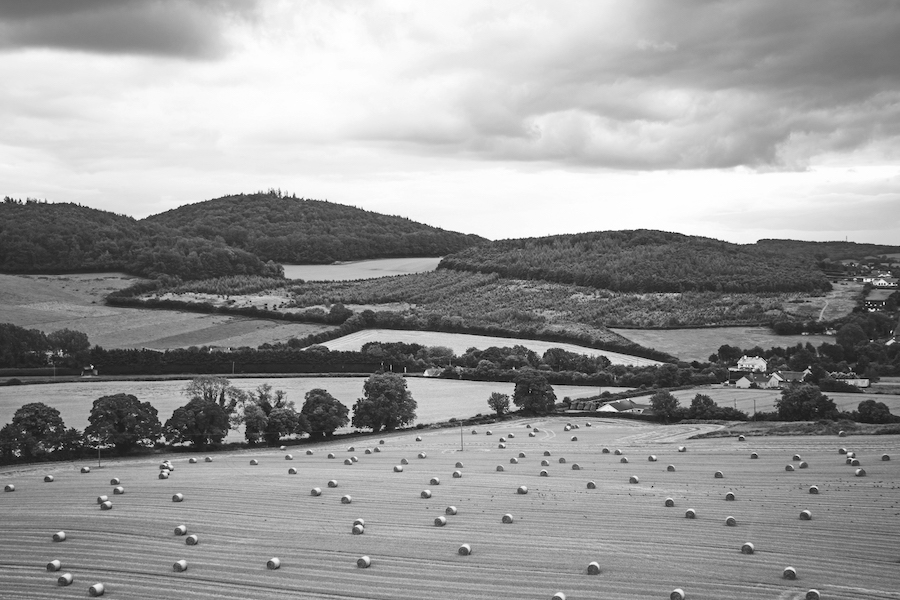CAP subsidies aren’t why farmland prices rose, so removing them won’t reverse that.
My favourite Savills Rural Research graph is the one that has tracked land values in the UK since the 1970s. We have data going way back before that too, but it’s not as interesting as the astronomical capital increases that occurred slowly at first after 1970 and then quite rapidly from 2000 onwards. This chart has brought consternation to policy-makers and agricultural activists alike, who see a correlation between land values and the Common Agricultural Policy system of area-based payments. Even now, Defra officials cite the UK’s Basic Payment Scheme as a driver of rising values and hope this will be reversed by our post-Brexit transition to a system whereby farmers are paid ‘public money for public goods’.
For those not familiar with the history of the CAP: in 2003, facing international pressure and public dismay over wine lakes and butter mountains, the Fischler reforms shifted the system of agricultural support away from direct market intervention and towards area-based payments. Post reform, farmers were in effect paid for the amount of land they were farming (as either owner or occupier), resulting in controversy that subsidies from the CAP in effect rewarded land ownership and failed to deliver on the CAP’s other objectives, especially on the environment.
For two key reasons it is a mistake to assume that the CAP drives land values, and thus a mistake to assume that Brexit may produce a different outcome in valuation. First, the rapid rise in land values after 2003 had little to do with the switch to area-based payments. While the payment methodology underwent a dramatic shift, the total budget did not. And indeed, careful steps were taken to ensure that the value of the area entitlement correlated with the amount the occupier previously received under market-based payments. Thus, a highly productive dairy farmer received a higher amount per acre than a lower-productivity arable farmer.
Forestry and environmental value is chasing the lower end of the farmland market upwards, underpinning the supply/demand dynamic
The reason we have forgotten this in England is that we chose to rapidly undertake a process of ‘internal convergence’, whereby all farmers over a period of seven years to 2010 eventually received the same amount per acre regardless of their farm type (although we still distinguish between upland areas and everywhere else). Many other countries did not do this, and indeed some EU countries such as Ireland still have these area payment rate differences. The point is that the total budget remained the same, allocated to the same farms, both before and after the transition to area-based payments. Any change in land value after 2003 was not to do with the amount of public money received by the occupier.
The second point to remember is that UK farmland is a global asset class. My senior colleagues active in the land market at the time reliably inform me that during the early 2000s UK farmland looked cheap, particularly taking into account certain co-benefits of UK land investment. Investors looking for a secure haven for their hard-earned cash were happy to shift it into UK property, and the competition drove value appreciation. Since these co-benefits (property income, a favourable tax regime and amenity value) rose to the fore, there has been only a weak correlation between income from agriculture and land values.
Most farms are blessed with at least some residential and commercial property, and diversification policy since the 1990s has actively driven farmers’ incomes away from exposure to agricultural returns, through investment in rural enterprise. New environmental services such as biodiversity and carbon offsetting are creating further competition for land. The inherent layering of multifunctional ownership and earning potential is forgotten when agricultural policy is considered as an influence on the value of land.
To that end, Brexit in its agricultural policy sense will be of little consequence. It is known that the total budget available to agriculture is preserved until 2024, and therefore the shift in agricultural policy dynamics after Brexit will be no different from that which occurred in 2003: same budget, different allocation. Disruption may be expected as a result of the regulatory shift and it might be painful for some farm businesses as they are forced to restructure and take on a new market focus, but forestry and environmental value is chasing the lower end of the farmland market upwards, underpinning the supply/demand dynamic.
Property values (and farmland values) will thus continue to be driven by the general market dynamics independently of Brexit. What is not known, particularly post coronavirus, is what those market dynamics will be, nor indeed how many more of our crowded island’s inhabitants will seek to flee their comparatively overpriced city lives for a slice of ‘the good life’ in the countryside. Coronavirus has reawakened both our appreciation of nature and our awareness of the vulnerability of our food supplies to external shock. Therefore the best short-term pricing strategy for farmland may be to think small rather than big.
A recent Channel 5 series fronted by Kate Humble indeed pointed out that the £350,000 potentially earned from selling an average suburban home in Milton Keynes could buy you at least 30 acres and an admittedly rundown house in rural Wales. Savills valuation data only tracks farm sales over 50 acres, but we have reason to be suspicious that there is plenty of activity in the sub-50 acre ‘amenity farm’ market.
The cloud on the horizon is of course post-coronavirus economic turmoil driving taxation and property law reform. Subject to that, UK farmland will remain extremely good value as an investment class regardless of Brexit – so long as you’re more interested in ‘yields’ than in ‘yield’.








